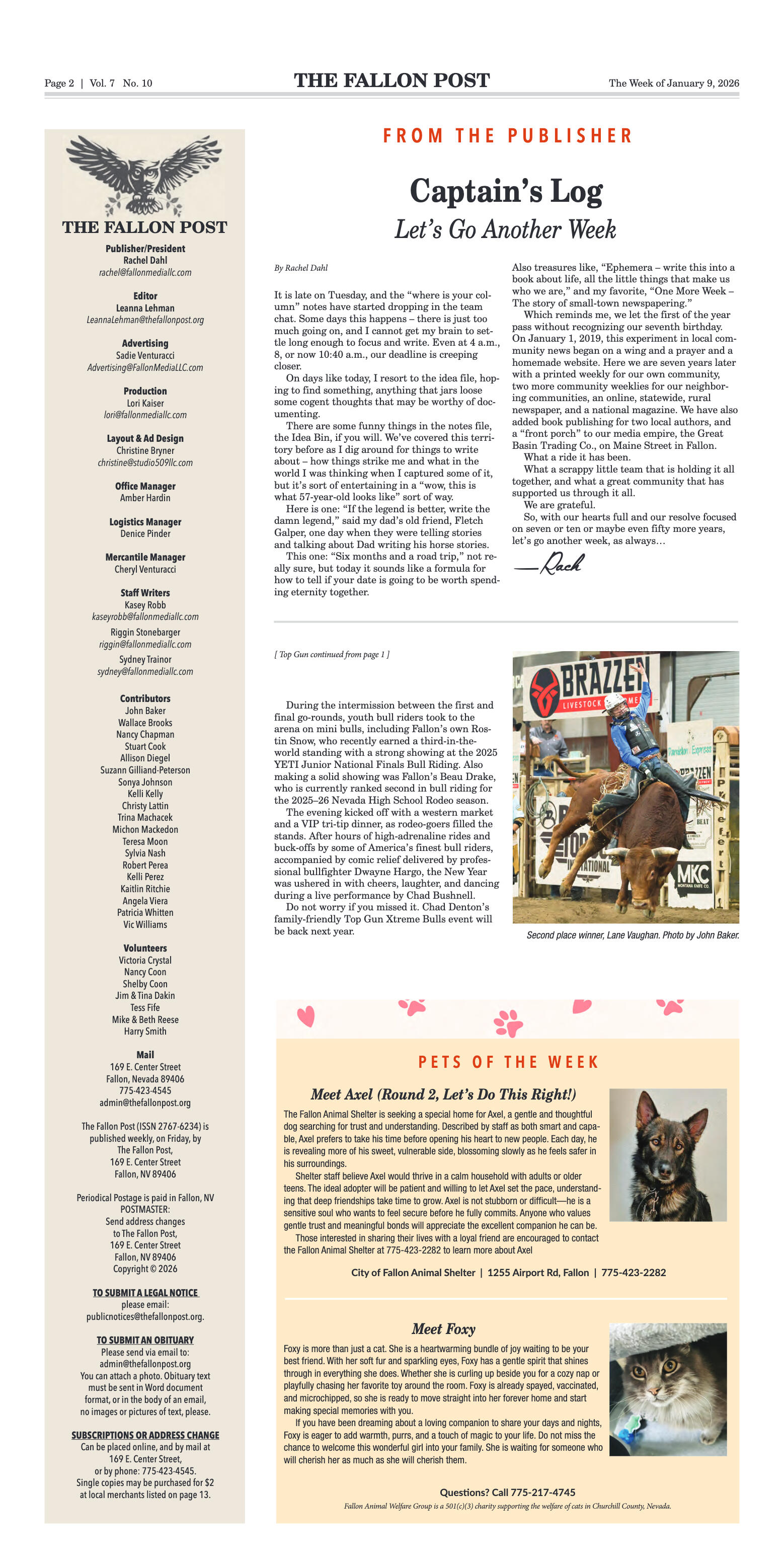The Central Nevada Health District published a Public Health Alert July 9 for Q Fever – a disease caused by the bacterium Coxiella burnetii. It mainly affects animals like cattle, sheep, and goats — but humans can get sick too, especially if they live or work near livestock. It’s most common in people who work with farm animals or live near agricultural areas.
You can get Q Fever by:
- Breathing in dust contaminated with infected animal waste or birth fluids
- Touching infected animals, bedding, or clothing
- Drinking raw (unpasteurized) milk
How to Prevent Q Fever:
- Avoid contact with birthing animals and their fluids
- Wear gloves and masks when working with livestock
- Wash hands thoroughly after handling animals
- Don’t drink raw or unpasteurized dairy products
- Keep barns and animal areas well ventilated
Symptoms of Q Fever (usually appear 2–3 weeks after exposure):
- High fever (up to 105°F)
- Severe headache
- Muscle aches
- Chills and sweating
- Fatigue
- Cough or chest discomfort
- Nausea or vomiting
Some people may show no symptoms, while others can develop serious conditions like pneumonia, liver inflammation, or heart issues.
What To Do If You Think You’ve Been Exposed:
- Call your healthcare provider right away
- Tell them if you’ve had contact with livestock or visited farms recently
- Early treatment with antibiotics is important — don’t wait!
The Reno Gazette-Journal reported that Nevada had eight reported cases of Q Fever in 2007, with six of them in Churchill County. Tammy Sneddon of Fallon told the Las Vegas Review Journal that both her 41-year-old husband and a 65-year-old man who lived next door had been diagnosed with Q fever before dying of aneurysms in 2007. In 2006, the state had seven reported cases of Q Fever, all of them in Churchill County.







































Comment
Comments